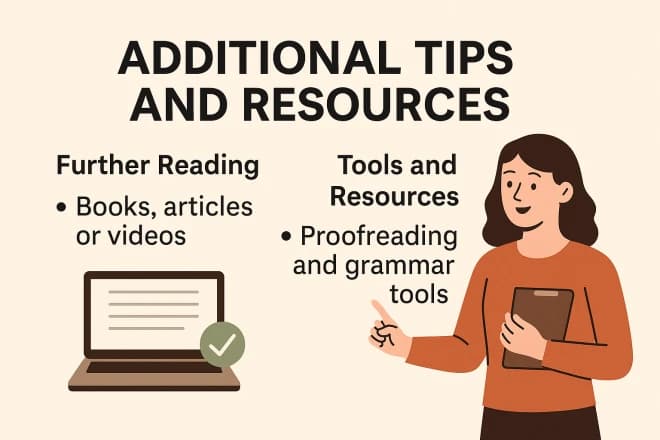Unlock Insights: Find the Answers You Seek on Our Blog
What is Theme in a Story
By Evelyn Sterling
The theme serves as a crucial element that intertwines with the characters, settings, and plots, seamlessly uniting them into a cohesive narrative. More than merely the backbone of a story, the theme embodies its very essence, enriching the narrative with depth, meaning, and perspective. It encourages both writers and readers to venture beyond the superficial, engaging deeply with the human experience and our surrounding world.
Through its influence, a theme amplifies plot development by ensuring every event aligns with and reinforces a unified message. It also promotes character growth, enabling characters to evolve in a manner that mirrors wider human truths. Most significantly, a thoughtfully crafted theme connects with readers on a profound level, eliciting both personal reflection and a sense of shared humanity.
Ultimately, the theme is what imbues a story with significance, providing insights that endure well beyond the conclusion of the narrative.

Understanding the Meaning of a Theme in a Story
Defining a Story Theme
A theme in a story is its underlying message or the central idea it seeks to convey. Unlike the plot, which outlines the story’s specific events, the theme offers a universal truth that readers can apply to their own lives and the world at large. It is the philosophical foundation upon which a story is built, guiding the narrative’s direction and imbuing it with significance. Whether it addresses the complexities of love, the nuances of morality, or the challenges of human resilience, a theme elevates a story from mere entertainment to a reflection on life itself.
The Importance of Theme in a Story
The theme’s role in storytelling is multifaceted. It provides direction, guiding the narrative’s flow and ensuring that each component of the story – from the unfolding events to the characters’ journey – serves a greater purpose. This coherence is crucial for engaging the reader and imparting a lasting impact. Moreover, a theme has the unique capacity to profoundly affect readers, offering insights into their own lives and the human experience at large. It can challenge perceptions, evoke empathy, and inspire change, making the act of reading a transformative experience.
A theme is not just a narrative tool but a bridge between the writer’s imagination and the reader’s reality. By exploring the depth and breadth of human emotion and existence, a theme enriches the storytelling process, making each story a unique exploration of the myriad facets of life.
Identifying and Choosing Your Story’s Theme
Sources of Inspiration
Finding inspiration for your story’s theme can be as vast and varied as life itself. Here are some fertile grounds for uncovering thematic elements that can resonate deeply within your narrative:
- Personal Experiences: Our own lives are a treasure trove of themes waiting to be explored. Reflect on your significant life events, challenges, and lessons learned. Personal growth, struggles with identity, or moments of clarity can all serve as robust themes.
- Historical Events: History is not just a series of dates and facts but a rich tapestry of human experiences. Delving into the triumphs, tragedies, and transformations of the past can provide timeless themes that speak to universal truths. These events, whether they’re widely known or part of a more niche history, can illuminate the enduring aspects of the human experience, offering a powerful backdrop against which your characters can struggle, grow, and triumph.
- Literary Works: Literature is a dialogue across the ages about the human condition. By examining the themes of other stories, novels, and poems, you can discover how different authors across time have tackled similar ideas. This not only provides inspiration but also a deeper understanding of how themes can be expressed in myriad ways, offering a rich palette from which to draw your own thematic expressions.
Diversity of Themes
Themes can range broadly, touching on every conceivable aspect of life and human nature. From the trials of love and the quest for identity to the impacts of technology on society and the struggle against injustice, themes encapsulate the essence of what it means to be human. Recognizing the diversity of themes is crucial in understanding the vast landscape you have at your disposal when crafting a story. Each theme offers a unique lens through which to view your narrative, providing depth and resonance that can transcend the boundaries of culture, time, and space.
Choosing the Right Theme
Selecting a theme that aligns with your story is both an art and a science. Here are some tips for choosing a theme that will enrich your narrative and captivate your readers:
- Align With Your Interests: Choose a theme that you’re passionate about. Your interest and enthusiasm will shine through your writing, making the theme more compelling for your readers.
- Consider Your Audience: Think about who you’re writing for and what themes might resonate with them. A theme that challenges or reflects the experiences and beliefs of your audience can create a deeper connection.
- Evaluate Your Plot and Characters: Ensure that your chosen theme naturally integrates with your plot and character arcs. The theme should serve as a foundation that supports and enriches your story, not something that feels tacked on or incongruous.
- Be Open to Evolution: As you delve into your story, be open to your theme evolving or becoming more nuanced. The process of writing can uncover layers to your theme that you hadn’t initially considered, adding richness to your narrative.
By thoughtfully identifying and selecting your theme, you can craft stories that not only entertain but also provoke thought, evoke emotion, and leave a lasting impression on your readers.
Integrating the Theme into Your Storytelling
Expressing Theme Through Characters
Characters are the heart of any story, and their journeys offer a compelling medium through which to explore and present themes. Here’s how to deeply integrate your theme into character development:
- Internal Struggles: Characters’ inner conflicts often mirror the broader theme of the story. For example, a character grappling with guilt can highlight themes of redemption or forgiveness. Show how these struggles push your characters towards growth or change.
- Development and Changes: Character arcs should reflect the unfolding of the theme. As characters confront challenges and make choices, their evolution should embody the thematic questions and insights you aim to explore. This not only makes your characters more relatable but also embeds the theme into the fabric of their being.
Weaving Plot and Theme Together
The plot provides the action and momentum that carry the theme throughout the story. To seamlessly integrate the two:
- Reflective Conflicts: Ensure that the central conflict of your plot serves as a direct exploration of your theme. If your theme is about the cost of ambition, your plot might revolve around a character’s relentless pursuit of success, regardless of the personal or moral price.
- Symbolic Milestones: Use key plot events or milestones to symbolically address aspects of your theme. For instance, a story about freedom might use the breaking of chains as a powerful plot point that underscores the theme.
The Role of Setting and Context
Setting and context are not just backdrops for your story; they can actively reflect and enhance the theme, adding layers of depth and meaning:
- Reflective Settings: Choose settings that echo your theme. A story about isolation might be set on a deserted island or in a bustling yet impersonal city, each setting reinforcing the theme in a unique way.
- Cultural and Historical Context: The context of your story can amplify its thematic resonance. A narrative set against the backdrop of a significant historical event, for example, can lend gravity to themes of courage, sacrifice, or resilience.
By thoughtfully integrating the theme into every aspect of your storytelling — from the characters and plot to the setting and context — you create a rich, cohesive narrative that engages readers on multiple levels, inviting them to reflect, empathize, and perhaps even see the world a little differently.
Practical Case Studies
Case Studies
Analyzing how well-known stories integrate themes can provide invaluable insights for your own storytelling. Let’s explore a few examples:
- “To Kill a Mockingbird” by Harper Lee: This novel explores themes of racial injustice and moral growth. Lee masterfully weaves these themes into the fabric of the story through the perspective of Scout, a young girl. The characters’ experiences in a racially divided Southern town and the courtroom drama encapsulate the themes, making the reader confront the complexities of morality and justice.
- “1984” by George Orwell: Orwell’s dystopian novel centers on themes of freedom, surveillance, and the power of truth. The oppressive regime of Big Brother and the protagonist’s struggle against it serve not only as the plot but as a direct exploration of the themes, inviting readers to ponder the value of freedom and the dangers of unchecked authority.
- “The Lord of the Rings” by J.R.R. Tolkien: Through the epic journey to destroy the One Ring, Tolkien delves into themes of power, corruption, and friendship. The diverse settings, from the Shire to Mordor, and the characters’ struggles reflect these themes, demonstrating how even the smallest individuals can influence great events, highlighting the power of unity and courage.
From Theory to Practice
To apply these insights to your own story creation, consider these steps and exercises:
- Identify Your Theme: Start with a broad theme you’re passionate about. Write a sentence that summarizes this theme in the context of a human experience or question.
- Character Integration Exercise: Create a character whose personal journey reflects or challenges your chosen theme. Outline their backstory, internal conflicts, and the evolution you envision for them in relation to the theme.
- Plot Development Workshop: Sketch a basic plot outline that can serve as a vehicle for your theme. Consider conflicts, challenges, and resolutions that would naturally arise from the thematic questions you’re exploring.
- Setting and Context Brainstorm: List settings and contexts that would intensify or complicate your theme. How do these choices reinforce the theme’s presence in the story?
- Feedback Loop: Share your theme, character outline, plot sketch, and setting ideas with peers or mentors. Use their feedback to refine how each element of your story serves the theme.
By dissecting how themes function in acclaimed stories and applying those principles through practical exercises, you can begin to craft narratives that not only entertain but resonate deeply with your readers, leaving a lasting impression on their hearts and minds.
How to Use AI Story Generator to Create a Story
What is the AI Story Generator?
The AI Story Generator is a cutting-edge tool designed to craft narratives using artificial intelligence technology. At its core, this technology leverages complex algorithms and vast datasets to generate stories, ranging from short tales to elaborate novels, based on input parameters provided by users.
One of the key advantages of AI Story Generator is their ability to produce content quickly and efficiently, providing a boon for content creators facing deadlines or seeking to explore a multitude of ideas.
Despite its impressive capabilities, AI Story Generator is not without limitations. The nuances of human emotion, the depth of cultural contexts, and the subtleties of creative expression can sometimes elude the grasp of current AI technologies. Therefore, while AI Story Generator can produce compelling narratives, the role of the human writer remains irreplaceable for infusing stories with genuine creativity, emotional depth, and personal touch.
How to Craft Themed Stories Using AI Story Generator
Step 1: Write Your Story Prompts
In the text box labeled “Write some prompts about your story,” input the central idea, theme, or prompts for your story. This could be a brief description of the plot, characters, or the message you wish to convey.
For example: “A tale of friendship overcoming adversity in a post-apocalyptic world.”
Step 2: Choose a Story Style
Select your desired story style from the dropdown menu. This will determine the genre and tone of the story the AI will generate.
Options include: Science Fiction, Romance, Mystery, Adventure, etc.
For example: If you’re continuing with the post-apocalyptic theme, you might choose ‘Science Fiction’.
Step 3: Choose Language
Pick the language in which you want the story to be written from the “Choose Language” dropdown menu.
Step 4: Choose Creativity Level
Adjust the creativity level slider to set how original or unconventional you want the story to be. The scale typically ranges from a safer, more predictable level (lower numbers) to a highly creative and novel output (higher numbers).
For example: Set it to 5 for a balanced approach to creativity, or slide towards 10 for maximum creativity.
Step 5: Verification
Complete any required human verification steps. This involve checking a box to ensure you’re not an automated system.
Step 6: Generate Your Story
Once all fields are filled in to your satisfaction, click the ‘Generate’ button to start the AI story generation process.
Wait for the AI to process your input and generate the story. This may take a few moments. Once done, your AI-generated story will be presented to you, based on the parameters you’ve set.
Tips for a Successful Generation
- Be as specific as possible in your prompts to guide the AI more effectively.
- Experiment with different creativity levels to see how it changes the story output.
- Don’t hesitate to generate multiple stories with varied settings to find the narrative that best suits your vision.
- Remember, the AI-generated story is a starting point. You can refine, edit, and enhance the generated content to suit your unique creative voice.
The theme of a story is the thread that weaves together characters, plots, and settings into a coherent and meaningful picture. It is the underlying heartbeat of a story that echoes the complexities of the human experience, inviting readers to embark on a journey that is as introspective as it is imaginative. The power of a well-defined theme is immeasurable—it can transcend the boundaries of the written word, leaving a lasting impact on the reader’s mind and heart.
AI Tools Categories
Browse all AI tools by category
All AI Tools
229Amazon
5AI Writing Generator
85Article & Content Writing
35Branding & Identity
54Content Generation
170Creative Ideas
32Educational Resources
34E-commerce
14Etsy
6Events & Celebrations
13Facebook
6Gaming & Fun
5Instagram
3Lifestyle & Personal
8LinkedIn
6Marketing & SEO
40Poem & Lyrics Writing
19Professional Documents
31Social Media
44Story & Book Writing
49Text Effects
14TikTok
7Twitter
3Writing Enhancement
36YouTube
11
Highly rated and most popular AI tools curated by our experts
Recently added AI tools that are gaining traction
- AI Post Generator

- AI Bullet Point Generator

- AI Discussion Post Generator

- AI 2 Weeks Notice Letter Generator

- AI Content Creation Ideas Generator

- AI Radio Ad Script Generator

- AI Podcast Script Generator

- AI Resume Objective Generator

- AI Resume Headline Generator

- AI Password Generator

- AI Snapchat Caption Generator

- AI Snapchat Username Generator

- AI Pinterest Board Name Generator

- AI LinkedIn Experience Description Generator

- AI Twitter Hashtag Generator

- AI YouTube Short Idea Generator

we prioritize displaying the latest content closely related to the current blog post.








